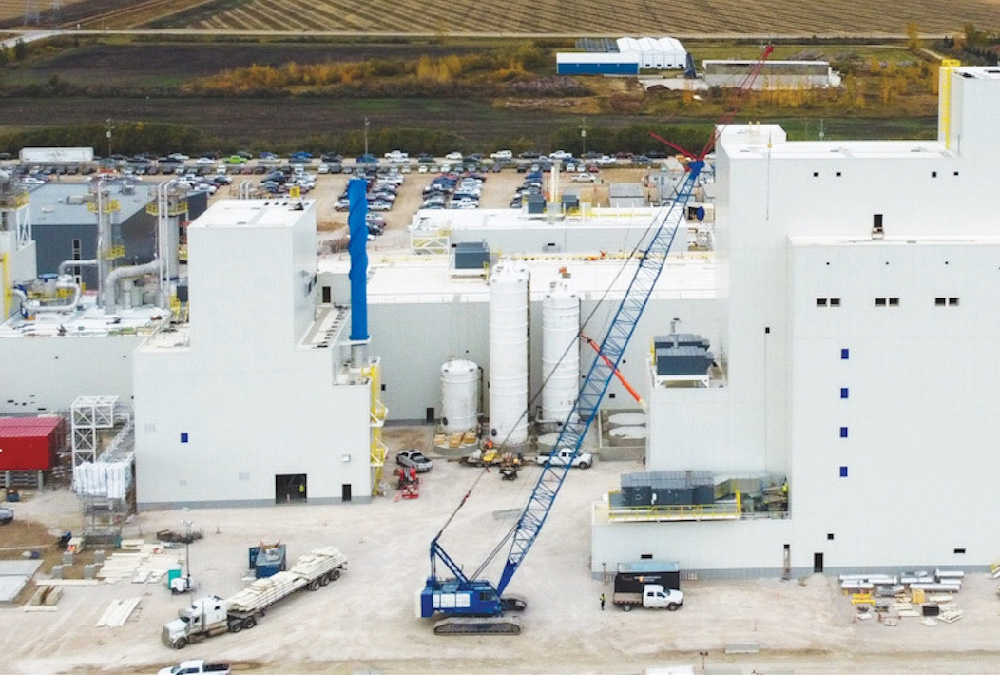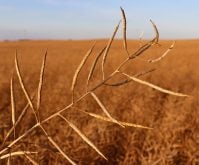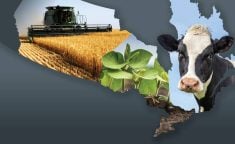This spring, the province proclaimed itself halfway to achieving some key Protein Advantage Strategy goals — namely in investments and job creation — yet the Manitoba Protein Consortium and its sub-groups appear to still be in the planning stages.
How does one square the two?
While flashy figures of jobs created and investments made are nothing to sneeze at, experts suggest that the true value of the province’s protein strategy is in the way it’s bringing industry, academic and producer groups to the planning table together.
Read Also

Finally getting paid for sustainable farming?
Alberta project says they might have a line on a workable ecosystem credit model to reward farmers for sustainability, and Manitoba might be next
That’s a long game, not a speed run.
Why it matters: For the strategy to meet its full potential, the efforts will have to be lengthy and consistent, regardless the government in power.
What’s in a plan?
In January 2019, then-Agriculture Minister Ralph Eichler travelled to Brandon’s Keystone Centre to tell the Ag Days crowd his plans to make Manitoba North America’s plant and animal protein supplier of choice.
“We are in a great position to grow the protein sector in Manitoba, but that growth requires a strategy, strong leadership by commodity and industry associations,” Eichler said.

Consultations commenced, with ag groups, industry folks, academics and the public weighing in.
That September, the province rolled out its Manitoba Protein Advantage strategy document, which included goals like $1.5 billion in new plant and animal protein investment; a 35 per cent increase in animal protein production and a 15 per cent reduction in carbon intensity per kilogram of animal protein — all by 2025.
Further down, the document added plans for more research, innovation, sustainability, and market development, among others.
A year after Eichler announced the strategy, his successor Blaine Pedersen announced the formation of a protein “consortium.”
In an interview this August, consortium chair Dickson Gould said this group of seven industry and NGO experts plus a provincial representative provides high-level guidance for the strategy.
A strategic advisory body of 17 industry leaders oversees “Project ASPIRE,” which is the breaking down of the strategy into ten ‘pillars’ or focus areas such as sustainability, branding and marketing, measurement and verification and labour.
The plan is to have roundtable groups for each pillar, which will work on developing that area.
The province announced ASPIRE in February this year. To date, five pillars have active roundtables, with the rest in development, Gould told the Co-operator.
In June this year, the province announced a protein research strategy and said it would supply $1.5 million to hire a research chair in sustainable protein at the University of Manitoba — essentially a person to lead the research strategy and use the provincial cash to further its goals.
The province has also held multiple protein summits and symposiums bringing together experts, industry leaders, ag groups and government officials.
What have you done for me lately?
In February, the province said that since 2019 Manitoba has attracted around $856 million in new protein sector investments, ag minister Derek Johnson told the Co-operator. Over 950 jobs have been directly created in the protein industry, he added.
The province also put money toward several research and development projects split between plant and animal protein.
However, it’s not always clear which goal each investment falls under — or why they’re counted.
For instance, Roquette’s giant Portage la Prairie pea processing plant has sometimes been rolled into investments attracted and job creation totals. While the plant opened after the strategy was launched, the company broke ground back in 2017.

Other goals, such as the 15 per cent reduction in carbon intensity in meat production, can’t be measured because the metric is still in development.
The Co-operator asked several producer groups, academics and companies what they saw as key accomplishments to date.
Groups said having a comprehensive strategy was itself a key accomplishment.
“Overall, (Manitoba) will be better suited with a comprehensive, action-oriented strategy guiding our protein production,” Wayne Hiltz, executive director of the Manitoba Chicken Producers” said in an email.
Some groups pointed to investments that benefited their sector, for example the bacon plant expansion at Maple Leaf Foods in Winnipeg for the pork sector, and a crown land productivity pilot which may yet benefit the beef sector.
Protein community forming
Overwhelmingly, however, groups that responded pointed toward the connections made between industry, researchers and government leaders.
“It opens up new possibilities,” said David Wiens, chair of Dairy Farmers of Manitoba and co-chair of the strategy’s advisory body.
Wiens explained that diverse groups have come together to talk about the protein industry’s challenges and opportunities in Manitoba. This has led Dairy Farmers of Manitoba to identify where it can plug in, but it’s also helped eliminate an ‘us versus them’ mentality.
“To me, it’s a tide that raises all boats,” Wiens said.
It’s tempting to think of plant protein as a competitor, he said. But, for instance, the Portage la Prairie Roquette plant has created pea byproducts that are great feed supplements for dairy cattle.
“If the dairy industry can provide some benefits in terms of upcycling some of the things that come out of the pea plant, it actually makes (Roquette’s) final product more sustainable,” Wiens said. It also improves sustainability for dairy farmers.
Bringing diverse protein interests to one table is no small feat, said Sylvain Charlebois, a food systems researcher from Dalhousie University.
“The most important legacy of the protein strategy was to bring everyone together,” said Charlebois, who has spoken at past Manitoba Protein Summits and symposiums.
Historically the ag sector has had a “stomach-share” mentality — in other words: “If I get into people’s stomachs, I will win, and the others will lose,” he said.
In today’s food industry, however, sheer calories are less important. Consumers value choice, said Charlebois.
The physical (or due to the pandemic, virtual) act of bringing researchers and industry leaders to one table is also valuable.
The Co-operator asked researchers if they found symposiums useful — all said yes.
For universities, it gives them a chance to expense students to the entire ‘ecosystem’ of the protein sector said James House, a University of Manitoba professor who led the development of the protein research strategy.
The symposiums have given students a chance to present their research, he added.
Charlebois said attending symposiums helps inform his researchers by keeping him in touch with what’s going on in the industry and what people are concerned with.

Events like these are a “tried and true” method of creating synergy between the academy and industry, said Lenore Newman, a researcher in food security and environment at the University of Fraser Valley in B.C.
It can be hard to align industry and academic goals. Creating alliances between the two groups is somewhat of a “holy grail,” Newman said. “Often the network can be the most valuable thing to come out of these sorts of initiatives.”
A deep network and ecosystem is behind some of the world’s greatest economic regions, e.g. Silicon Valley, Newman said.
The long (long) game
But deep networks aren’t created overnight — and the fruits of those networks also take time to mature.
“Manitoba probably can’t be the protein producer of choice tomorrow, but sustained, thoughtful policy direction in five years or 10 years, that’s how you build this,” Newman said, citing the Netherlands’ leadership in indoor agriculture technology. A hundred years ago, likely no one would have pinned the small low-lying country as a future star of that field, but the Dutch picked a policy direction and stuck to it, she said.
“Plan to keep doing it for 10 years, 15 years, so over multiple electoral cycles,” she said. “These things take time, especially when you’re building a reputation globally.”
A provincial protein ‘concierge’ is also a good idea, Newman said — essentially a dedicated government official who is the ‘one stop shop’ fixer for industry folks facing challenges. In B.C., ag tech and oil and gas have seen good results with this method, she said.
The government will also need to invest in a meaningful enough way to keep the needle moving.
“The money has to be there,” Newman said.
So, does the province plan to support the protein sector past 2025?
“Of course,” Johnson told the Co-operator.
“We’ll continue to identify and work to attract new companies and expansions, and share our sustainability vision,” he added.
However, the strategy is meant to be taken over by the industry, he said.
“We’re just starting the engine,” he said. “Once the engine is running it will continue to run on its own.”
















